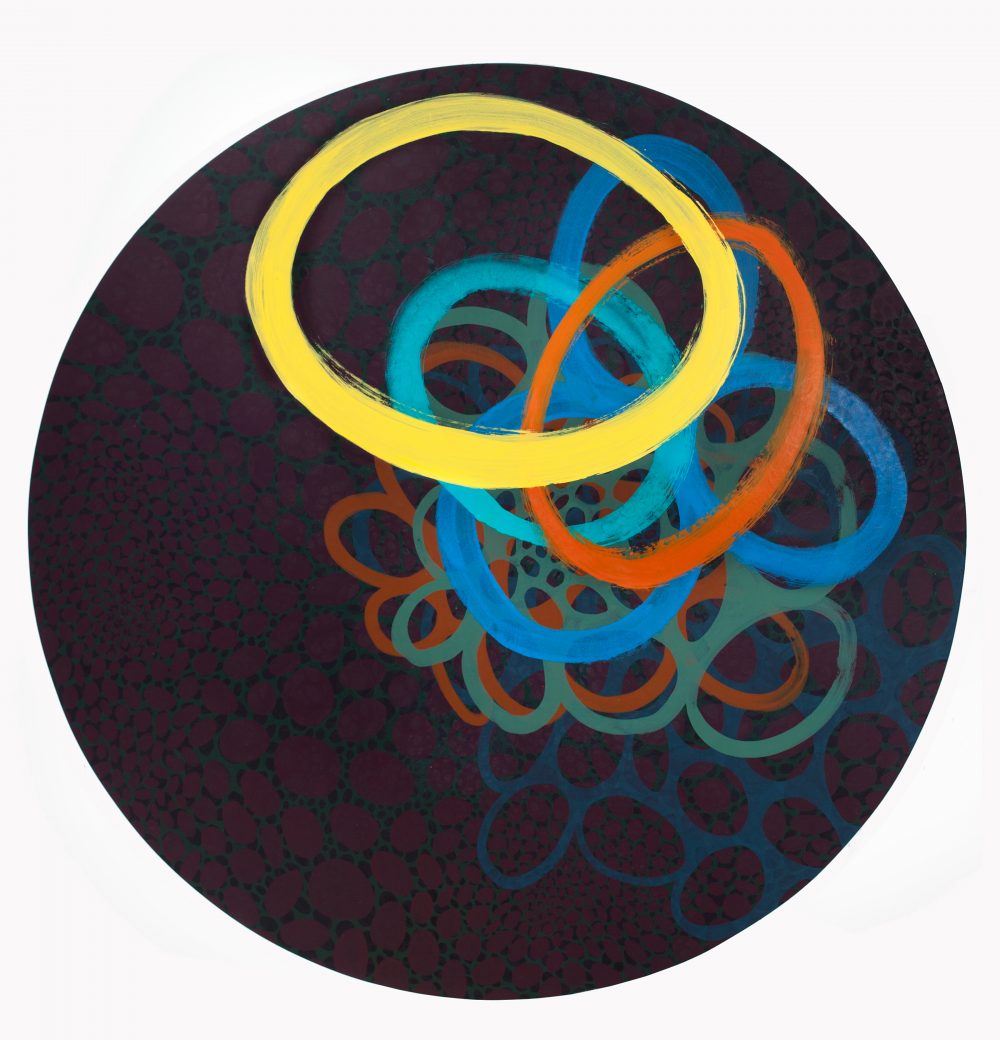Kaamos I by Petra Sairanen
- Title: Kaamos I
- Artist: Petra Sairanen
- Medium: Oil on canvas
- Size: 72"h x 72"w
- Creation date: 2011
- Added to collection: 2014
- Donor: Purchased by Portland Community College, Rock Creek Campus
- Campus: Rock Creek
- Location: B7/2 Hallway gallery
Petra Sairanen's Kaamos I, 72x72" oil on canvas, painted in 2011, is a circular stretched canvas often called a "tondo" (from the Italian for "round"). Sairanen's use of the tondo and its abstract patterns of circles painted in meticulous overlapping layers of increasingly larger interstices may suggest cellular walls viewed under a microscope, but these circles move vividly outwards towards us in space, from purplish dark tones to lighter blues and oranges culminating in the gestural stroke of the final yellow circle, which explodes out of the depths like a cry. Sairanen, an artist born in Finland, has titled the work "Kaamos" the Finish term for the winter period of continual darkness that can last up to two months. The artist has explained that the visual inspiration for the forms in the painting were lights observed reflected on the surface of dark water.
The tondo also has a specific tradition in medieval and Renaissance Italy: after a successful childbirth, noble women were presented with a 'desco da parti" or birth tray, a functional platter decorated with scenes of childbirth. The platter, which began as a functional object for serving visitors and well-wishers, was later hung on the wall as a decoration, frequently adorned with the heraldic emblems of the birth family. Although an abstract painting is a self-contained object and not a picture of anything, "Kaamos I" evokes many threads at once: darkness, winter, lights on the water, the waters of life, the birthing process, the arrival of light out of darkness.
Where a work of art is hung can subtly influence the content. Kaamos I hung for many years in B9's Event Center where it served as a dramatic clarion welcoming visitors; now recently relocated to B7 near the science division offices, the painting seems to evoke imagery from biology and physics.

